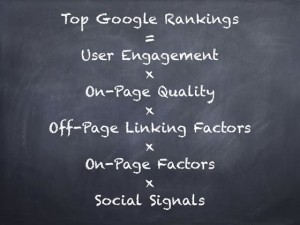Introduction to Google & SEO
Were you penalized by the Google Panda algorithm or the Google Penguin algorithm? The Google Penguin algorithm was launched around the 24th April 2012 so traffic drops near this date indicate that Penguin is responsible.
Whichever keywords dominate your exact match anchor text will usually be the ones hit hardest by Penguin. We use the free back-link analysis tool at majesticseo.com to see which search terms are being used in anchor-text.
We consulted with Dave Holland, Managing Director of highly experienced Deeho a search engine optimization specialists who gave us these SEO tips to share with you;
Back-Link Construction
To comply with the needs of Penguin, your link text density needs to be less than 5%. Change the bulk of the exact match search term links for either Brand based links, URL variation links or ‘junk’ links in different permutations.
Your website name or registered name is a Brand link. Ensure that you use a different mix of URL links.
Focus on creating quality back-links from websites that all have different C Class IP addresses as these will help your rankings a great deal. Aim to get inbound links from content related sites. Website authority can be measured by Google PR and ‘Trust’ score metrics. Where possible try to find website pages that will link to you that already have ‘authority’ back-links pointing to them.
Using Link Networks
Never use automated link networks to create new links because the links will not be high quality and you’ll eventually be penalized for working with them.
On-Page Optimization
In order to keep the Panda algorithm happy, your on-page keyword density should never exceed 2 or 3%. A good way to enhance the ‘quality’ of your own site is to link to an ‘authority’ site from your content. .gov and .edu sites are then best.
Quality and Quantity of Web Content
High-quality valuable content is king. It also needs to be unique, and produced to a high standard. Contextual links are links from within your page content using phrases to link to related pages of your site. They can also link out to 3rd party sites, especially ‘authority’ sites.
If your page content is lacking quality then ask www.cheapresponsivewebdesign.co.uk to review your page content & structure so that you can be sure that your site is Google compliant and compatible with all devices.
How to Use Media
Using images to separate your site content into more readable sections can make your site content more appealing to your visitors. A good video will also help to keep your visitors on your pages for longer, enhancing your user engagement metrics.

For each image that you add to your content, add a keyword rich image description as alt text behind the picture. Vary your alt text keywords for each image used.
Spell checking is extremely important and you ought to get in the habit of double-checking everything you write so that it’s all of the highest quality possible. It is best to write as much content as your page needs without waffling, but the 500 word level is a good benchmark to target.
When you write compelling content that people spend time reading you will then be rewarded in search. Google would like to send new traffic to the websites with high quality content, so make your content as ‘sticky’ as possible. Using different words that have similar meanings is a good practice, because Google can associate those keywords using latent semantic indexing (LSI).
This allows you to write more natural sounding content without having to repeat your exact match primary search terms throughout your page.
How to Use Metatags
Make sure that all your pages contain unique meta-tags because if your tags are duplicated across several pages you will receive a ranking penalty. The purpose of your meta description tag is to get potential visitors to click through from search results to your site. Write teaser description tags to improve your website’s user experience.
Engagement Metrics
YSlow is a free Firefox website load speed measuring tool that will let you see if your site is quick enough to rank well in Google. Keep your bounce rate below 55% for the best Google rankings. If too many of your website visitors hit the back button as soon as they arrive on your page then it indicates that your content isn’t ideal for the search traffic that Google is sending you.
Visitor Page Views
Google looks at your web site to see the average page views per visitor, the larger this number is the better. The average time on site is an important metric for your quality score. The longer people spend on your site, the better your rankings will be. With the majority of people using mobile phones and tablets, your page views will be greatly enhanced if your site is fully responsive – http://cheapresponsivewebdesign.co.uk can guide you to the best solution if your site isn’t mobile friendly.
Learn SEO For Yourself
Many website owners need more than a passing overview of SEO, enabling them to be more hands on, controlling their traffic streams more effectively.
You can learn the latest search engine optimization and traffic generation techniques online at http://www.seo-trainingcourses.com/ who will also keep you abreast of all the changes that Google and the other large search engines make, as they happen.
The key to effective long term SEO is to future proof your website traffic generation. Short cuts, black hat tricks and underhand, short term practices will not work for you in the long term. Google rely upon trust and authority to gauge the power and ranking strength of your site. Building your website authority is the only way to preserve your long term rankings and traffic.